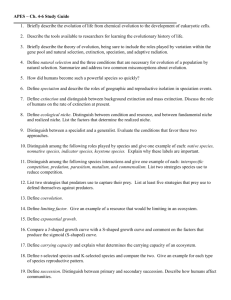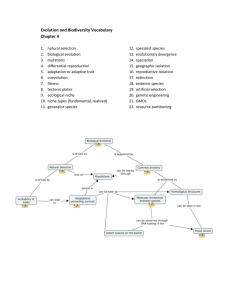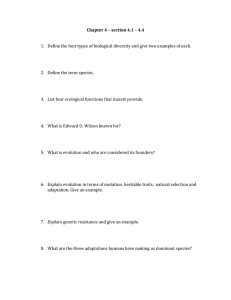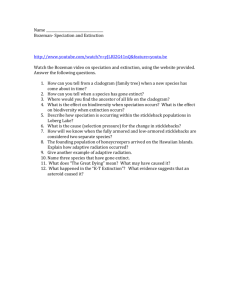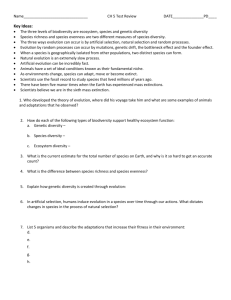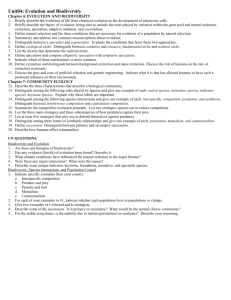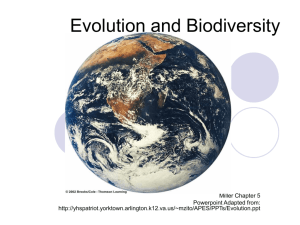File
advertisement
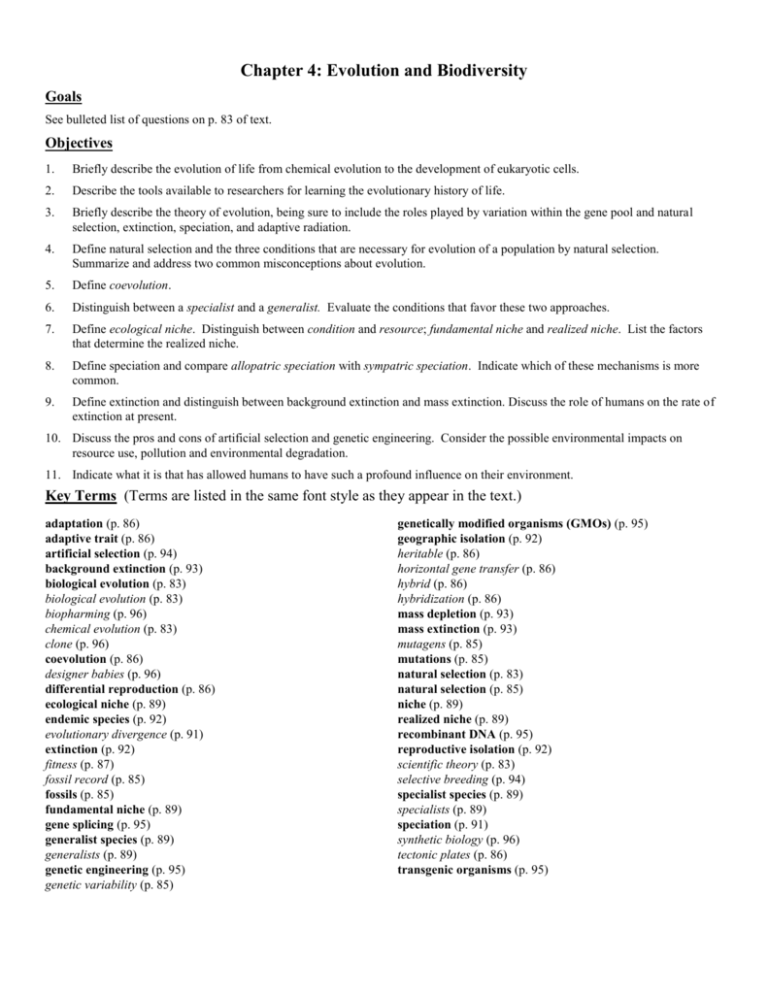
Chapter 4: Evolution and Biodiversity Goals See bulleted list of questions on p. 83 of text. Objectives 1. Briefly describe the evolution of life from chemical evolution to the development of eukaryotic cells. 2. Describe the tools available to researchers for learning the evolutionary history of life. 3. Briefly describe the theory of evolution, being sure to include the roles played by variation within the gene pool and natural selection, extinction, speciation, and adaptive radiation. 4. Define natural selection and the three conditions that are necessary for evolution of a population by natural selection. Summarize and address two common misconceptions about evolution. 5. Define coevolution. 6. Distinguish between a specialist and a generalist. Evaluate the conditions that favor these two approaches. 7. Define ecological niche. Distinguish between condition and resource; fundamental niche and realized niche. List the factors that determine the realized niche. 8. Define speciation and compare allopatric speciation with sympatric speciation. Indicate which of these mechanisms is more common. 9. Define extinction and distinguish between background extinction and mass extinction. Discuss the role of humans on the rate of extinction at present. 10. Discuss the pros and cons of artificial selection and genetic engineering. Consider the possible environmental impacts on resource use, pollution and environmental degradation. 11. Indicate what it is that has allowed humans to have such a profound influence on their environment. Key Terms (Terms are listed in the same font style as they appear in the text.) adaptation (p. 86) adaptive trait (p. 86) artificial selection (p. 94) background extinction (p. 93) biological evolution (p. 83) biological evolution (p. 83) biopharming (p. 96) chemical evolution (p. 83) clone (p. 96) coevolution (p. 86) designer babies (p. 96) differential reproduction (p. 86) ecological niche (p. 89) endemic species (p. 92) evolutionary divergence (p. 91) extinction (p. 92) fitness (p. 87) fossil record (p. 85) fossils (p. 85) fundamental niche (p. 89) gene splicing (p. 95) generalist species (p. 89) generalists (p. 89) genetic engineering (p. 95) genetic variability (p. 85) genetically modified organisms (GMOs) (p. 95) geographic isolation (p. 92) heritable (p. 86) horizontal gene transfer (p. 86) hybrid (p. 86) hybridization (p. 86) mass depletion (p. 93) mass extinction (p. 93) mutagens (p. 85) mutations (p. 85) natural selection (p. 83) natural selection (p. 85) niche (p. 89) realized niche (p. 89) recombinant DNA (p. 95) reproductive isolation (p. 92) scientific theory (p. 83) selective breeding (p. 94) specialist species (p. 89) specialists (p. 89) speciation (p. 91) synthetic biology (p. 96) tectonic plates (p. 86) transgenic organisms (p. 95)

